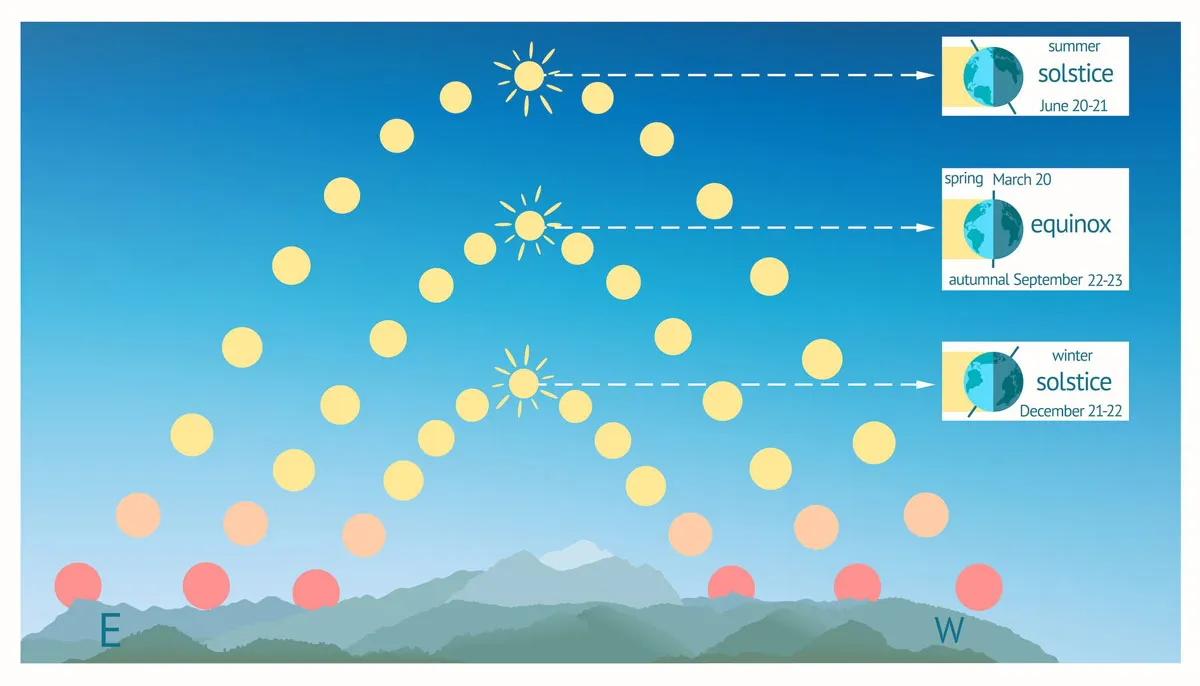Spring has arrived and we're now precisely midway between mid-winter and mid-summer.
Each year, two equinoxes occur, one in March and the other in September. But they're not just calendar markers; they're scientific points in the Earth's orbit and have impacts down here on the ground.
So, when exactly is the spring equinox, and what impact does it have on our planet?
When is the spring equinox 2024?
In the northern hemisphere, the spring equinox for 2024 falls on Wednesday, 20 March. While meteorological spring commenced on 1 March, the spring equinox signifies the onset of astronomical spring, occurring at precisely 3:06 AM GMT.
The equinoxes present complete opposite experiences for the two hemispheres. While it marks spring's arrival in the northern hemisphere, it signifies autumn's commencement in the southern hemisphere.
What is the spring equinox?
During the spring equinox, the Sun crosses the celestial equator – an imaginary line in the sky above Earth’s equator – transitioning from the southern to the northern hemisphere.
This event results in nearly equal daylight and nighttime hours in both hemispheres, hence the term 'equinox,' derived from Latin for 'equal night.'
Despite this equal division, we experience slightly more daylight due to atmospheric refraction, which bends the Sun's rays.
In contrast to the spring equinox, during the autumn equinox, the Sun crosses the celestial equator from north to south.
The exact point where this occurs, known as the 'First Point of Aries,' was originally in the constellation Aries but has shifted to Pisces over the centuries. This is because, much like a spinning top on a table, the Earth wobbles on its axis of rotation via a process known as precession.
Now, the so-called First Point of Aries is moving gradually towards Aquarius and won’t return to Aries for about 23,000 years.
In the northern hemisphere, the spring equinox is alternatively referred to as the "vernal equinox", with "vernal" literally meaning “relating to or happening in spring”.
Read more:
Is the spring equinox the same as the solstice?
In short, no. The distinction between solstices and equinoxes lies in day length. Equinoxes feature nearly equal day and night lengths, while solstices mark the shortest (winter) and longest (summer) days.
Equinoxes occur when the Sun is directly above Earth's equator. In contrast, during the summer solstice, the northern hemisphere tilts closest to the Sun, resulting in the longest day, while during the winter solstice, it tilts farthest away, leading to the shortest day.

Why do the dates of the spring equinox change?
The spring equinox varies in date due to Earth's orbit around the Sun taking slightly over 365 days (specifically 365.24 days). To compensate for this, the Gregorian calendar adds an extra day every four years, creating leap years like this one.
As a result, the March equinox shifts approximately six hours later each year. For instance, in 2023 around 9:24am GMT, this year it’s at 3:06am GMT and in 2025 it’ll be at 9:01am GMT.
It’s all thanks to our leap year system that we don’t have to work too hard to remember the date of the spring equinox; it’s 20 March until 2044, when it will occur on 19 March instead.
Dates and times of future spring equinoxes, GMT
2024: 20 March, 3:06am
2025: 20 March, 9:01am
2026: 20 March, 2:45pm
2027: 20 March, 8:24pm
2028: 20 March, 2:16am
2029: 20 March, 8:01am
2030: 20 March, 1:51pm
What is the difference between astronomical spring and meteorological spring?
Astronomical spring and meteorological spring offer two perspectives on the onset of the spring season.
Astronomical spring, discussed here, relies on Earth's position in its orbit, commencing with the vernal equinox.
In contrast, meteorological spring spans March, April and May in the northern hemisphere, and September, October and November in the southern hemisphere. This definition, based on temperature cycles, aids meteorologists in seasonal analysis and forecasting by providing consistent monthly statistics for comparison.
The good news is, whichever way you define it, for those of us in the northern hemisphere, winter is over and spring is here.
Does the equinox affect the tides?
Yes, slightly. Although the moon has the greatest effect on the tides, the Sun’s gravitational pull still plays a small role.
During the equinoxes, the Sun is directly over the Earth’s equator, which enhances the Sun's gravitational pull on Earth, particularly affecting tides. These larger tides are known as "equinoctial tides".
Does the equinox affect the aurorae?
Aurorae and geomagnetic storms occur more frequently around the equinoxes due to increased interaction between the Earth's and the Sun's magnetic fields.
That’s because the Sun’s south pole is pointing right at us, making it easier for ejected solar material from flares to travel along the Sun’s magnetic field lines to Earth.
This material collides with Earth's atmosphere and forms the spectacular aurorae we’re used to seeing at the north and south poles.
Read more:







